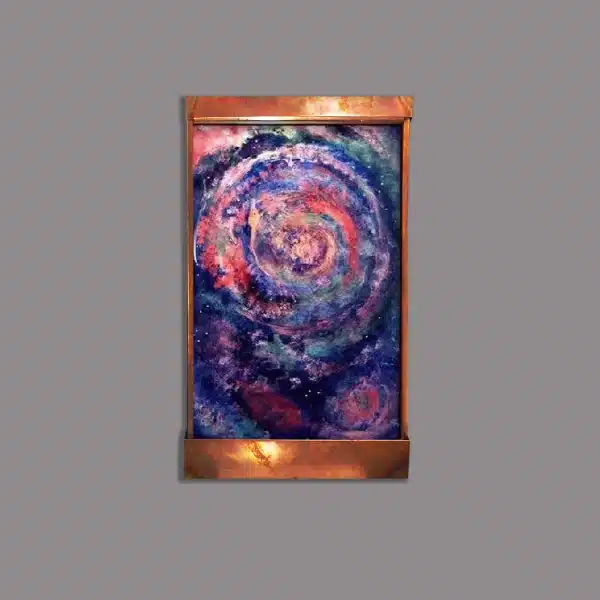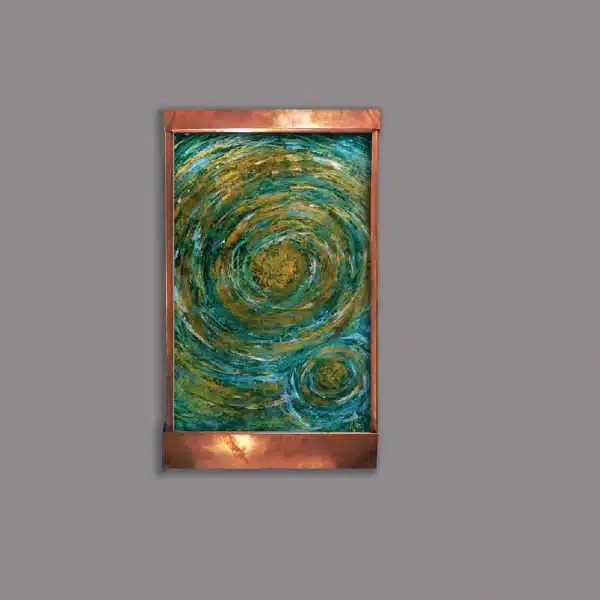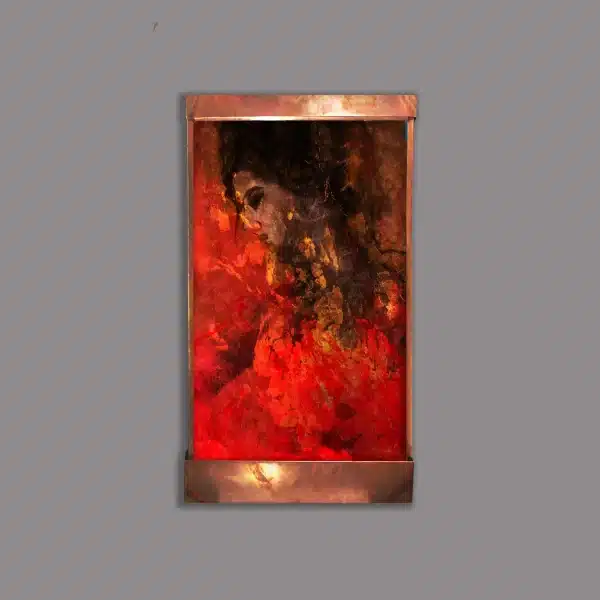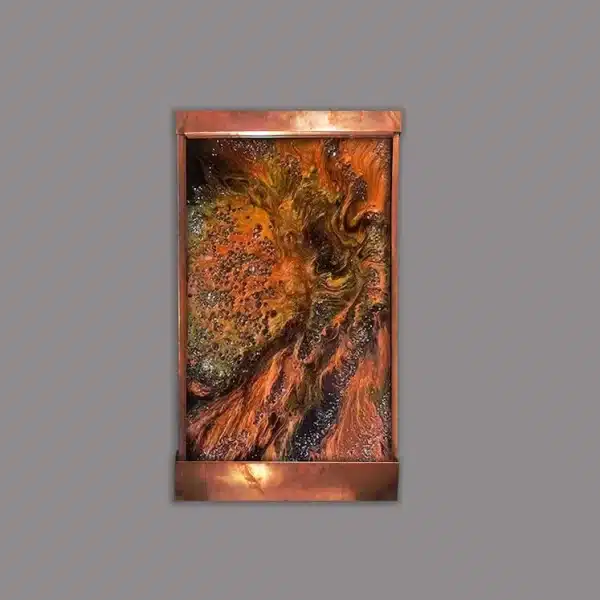Introduction: The Rising Demand for Sustainable Luxury
Luxury has long been synonymous with indulgence, extravagance, and timeless beauty. Yet in today’s world, the definition of luxury is evolving. Affluence is no longer just about opulence, it’s about mindfulness, environmental responsibility, and long-term value. Eco-conscious homeowners, designers, and architects are now blending sustainability with luxury in ways that elevate spaces while protecting the planet.
One of the most elegant manifestations of this movement can be seen in high-end water features. From outdoor fountains and indoor water fountains to innovative designs like rain curtain fountains, sustainability is now at the core of luxury water installations. These designs prove that environmental consciousness doesn’t mean compromising on aesthetics, it enhances them.
This blog explores how sustainable water fountains and eco-friendly water features are redefining luxury living.
The Evolution of Water Features in Luxury Design
Ancient Roots, Modern Innovations
Water features have captivated civilizations for centuries. The ancient Romans adorned their villas with elaborate garden fountains as a sign of prosperity, while Moorish architecture celebrated tranquility with courtyard fountains. Today, these traditions are reimagined with cutting-edge technology and sustainability practices.
Luxury Meets Sustainability
Modern luxury no longer tolerates wastefulness. A luxury outdoor fountain is no longer judged solely by its grandeur but also by its eco-credentials:
- Water efficiency through recirculating pumps.
- Energy conservation with solar-powered systems.
- Eco-friendly materials like reclaimed stone or recycled metals.
- Smart systems that monitor water usage and optimize performance.
The result? A perfect blend of indulgence and responsibility.
The Many Faces of High-End Sustainable Water Features
1. Outdoor Fountains
Outdoor fountains have always symbolized sophistication. Today’s eco-conscious outdoor water fountains integrate:
- Closed-loop systems that recycle water endlessly.
- Low-energy pumps that reduce carbon footprints.
- Rainwater harvesting that naturally replenishes the fountain.
These features make outdoor water fountains not only breathtaking but also environmentally sound.
2. Garden Fountains
For eco-conscious homeowners, garden fountains transform landscapes into serene sanctuaries. Luxury sustainable designs use porous stone and native plants around the fountain to naturally filter and conserve water.
3. Indoor Water Fountains
The allure of indoor fountains lies in their ability to bring nature indoors. Indoor water fountains improve air quality, add humidity to dry environments, and create soothing soundscapes. Sustainable variations use compact pumps and minimal water evaporation systems to align with green living goals.
4. Tabletop Fountains
Tabletop fountains are proof that sustainability and luxury can exist even on a small scale. Perfect for offices and homes, these fountains utilize LED lighting (far more efficient than halogen) and small recirculation pumps that conserve both energy and water.
5. Wall Fountains
Wall fountains add drama and elegance to vertical spaces. Eco-friendly luxury wall fountains use recycled glass, stainless steel, and efficient pump systems. Their vertical design also reduces surface evaporation, making them water-smart.
6. Rain Curtain Fountain
The rain curtain fountain is a masterpiece of modern luxury. It creates a sheet of falling water that mimics natural rainfall. When designed with LED lighting, reclaimed water systems, and automated shut-off timers, a rain curtain water feature becomes the epitome of sustainable indulgence.
7. Floor Fountains
Floor fountains are freestanding designs that create a bold architectural statement. Eco-conscious floor fountains often use locally sourced stone, solar-powered circulation systems, and programmable pumps to reduce energy usage.
Sustainability Practices That Elevate Water Features
1. Recirculating Water Systems
Traditional fountains often wasted thousands of gallons of water. Sustainable luxury fountains now rely on closed-loop systems, where water is continuously recycled. This drastically reduces waste while maintaining visual impact.
2. Solar-Powered Pumps and Lighting
Solar integration allows indoor and outdoor water fountains to run without adding to the electricity grid. Solar panels can discreetly power pumps and LED lights, making fountains both eco-friendly and cost-efficient.
3. Eco-Friendly Materials
Luxury water features now emphasize materials that reflect environmental care:
- Recycled metal frameworks.
- Reclaimed stone for garden fountains.
- Bamboo and sustainable hardwoods for frames.
- Non-toxic finishes to protect local ecosystems.
4. Rainwater Harvesting Integration
Pairing fountains with rainwater harvesting ensures that natural rainfall replenishes the water source. This reduces reliance on municipal water while maintaining a luxury aesthetic.
5. Smart Fountain Technology
From smartphone apps to AI-powered monitoring, smart technology ensures water features operate efficiently. Features include:
- Automatic shut-off timers.
- Leak detection systems.
- Adjustable pump speeds based on demand.
Luxury Aesthetics in Eco-Conscious Design
Balancing Minimalism and Opulence
High-end sustainable water features often combine minimalist design with luxurious finishes. For example, a sleek wall fountain may use recycled glass accented with brushed copper. A rain curtain water feature can look ethereal while being powered entirely by solar energy.
Sensory Indulgence
Luxury is as much about the senses as it is about appearance. Eco-conscious fountains provide:
- Soundscapes: Gentle trickles or dramatic rain curtain effects.
- Visual drama: LED-illuminated flows and textured stone.
- Tactile beauty: Natural materials that feel as good as they look.
Biophilic Design in Modern Architecture
Eco-luxury fountains embrace biophilic design principles, bringing humans closer to nature. Indoor fountains replicate the calming effects of natural streams, while garden fountains attract birds, butterflies, and beneficial insects.
The Benefits of Eco-Luxury Water Features
Environmental Benefits
- Reduce water waste through closed-loop recirculation.
- Minimize energy usage with solar and LED systems.
- Promote biodiversity by creating microhabitats.
Health and Wellness Benefits
- Reduce stress through calming water sounds.
- Increase indoor air humidity and quality.
- Encourage mindfulness and relaxation.
Economic Benefits
- Lower utility bills with efficient technology.
- Increase property value with sustainable luxury upgrades.
- Reduce long-term maintenance costs through durable eco-materials.
Case Studies: Sustainability in Action
Modern Villa with a Rain Curtain Fountain
A luxury villa in California features a rain curtain water feature powered by solar panels. The water is collected from rainwater tanks, filtered naturally, and recirculated. This installation combines jaw-dropping beauty with near-zero environmental impact.
Eco-Friendly Office with Indoor Fountains
A corporate office integrated indoor water fountains in its lobby to enhance wellness. The fountains use reclaimed stone, LED illumination, and efficient pumps. Employees reported reduced stress and increased productivity, while the company showcased its commitment to sustainability.
Rooftop Garden with Tabletop Fountains
In an urban luxury apartment, tabletop fountains powered by solar energy brought nature to a rooftop garden. Small, elegant, and eco-conscious, they transformed the space into a sustainable oasis.
Future Trends in Sustainable Luxury Water Features
- Integration with Smart Homes: Voice-activated fountains, automated water level monitoring, and AI optimization will become standard.
- Hydroponic Water Features: Combining fountains with plant growth systems for food production.
- Advanced Filtration Systems: Using biofilters and natural minerals to maintain water quality sustainably.
- Modular Water Features: Customizable designs that adapt to evolving sustainability practices.
The luxury water feature of tomorrow will be even more eco-conscious, seamlessly blending technology, design, and environmental stewardship.
Conclusion: Redefining Luxury Through Sustainability
Luxury is no longer about excess, it’s about making choices that reflect responsibility, mindfulness, and timeless beauty. High-end water fountains, whether they are outdoor fountains, indoor fountains, tabletop fountains, or grand rain curtain water features, are now designed to elevate spaces while preserving the planet.
By choosing sustainable luxury, homeowners, architects, and designers are not only making an aesthetic statement, they are contributing to a future where indulgence and eco-consciousness exist in harmony.







